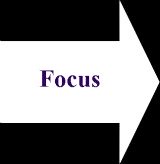Home Page | Blog | Managing | Marketing | Planning | Strategy | Sales | Service | Networking | Voice Marketing Inc.
A Succession Planning Process
How to Build a Strong Business Continuity Strategy?
Use an effective succession planning process to build your business continuity strategy. Additionally, if you have a family business, your exit strategy needs to consider some different and unique pressures. Family business succession planning is necessary so that continuity decisions are not based solely on family relationships. With a good strategy for transition, your business has a much stronger opportunity for success.
Search This Site

A succession planning process is necessary for business continuity; yet many business owners don't plan for their exit or eventual retirement from the company, leaving a vacuum or gap in the organization.
Additionally, if your business employs members of your immediate, or extended, family, it is necessary to make family business succession planning a priority.
Your organization's continued 'health' and performance is dependent on a strong plan. Lack of succession strategy can also be a constraint on your business' growth as lenders and investors want to know that the business can continue on successfully if you leave or retire.
Family Business Succession Planning
Businesses that are operated and run by family members are particularly at risk of failure without effective succession planning. Less than 30% of family businesses manage successful transitions to the next generation of family; and by the third generation even fewer survive.
As the owner of your company, when you are ready to retire or exit your business you need to make some tough decisions. Will you sell the company? Or, if you have family members working in the business, will you keep an interest in the business and let the remaining family members buy you out? How will the next leader of the company be appointed? And on what basis is the next CEO or President appointed?
Some families believe that the oldest son or daughter should step into the parent's shoes; but what if a younger son or daughter has a better skills set, better education and/or better experience?
Family businesses that use an effective succession planning process to ensure successful continuity after the owner exits the business can become high performance organizations. Succession needs to be planned far ahead of the actual exit from the business.
Family business issues that need to be addressed includes: who will lead, and who will follow. Do the remaining family members have the necessary skills or do some or all of them require leadership or other management training? How do you plan to handle the family dynamics and relationships; both in the business and outside of the business?
How will you receive a financial payout from the business (or will you)? Can you preserve the business' assets and wealth? Does the existing organizational structure work or will it need to be adapted?
Succession Planning Process: Steps to Take
The first step in family business succession planning is to talk with the members of the family (both inside the business and outside of it). Make sure that you work with a business continuity consultant who has experience in transitioning family businesses; the consultant will help take the emotions out of the process. Get issues like who works the hardest and who spends the most time at work on the table and part of the discussion.
The next step is to select the person who will replace you: this could be a family member or an unrelated individual who fits the best. Note: you may choose to place or position a temporary caretaker manager while your family member undergoes the training and development necessary to step into your shoes.
Once you've determined who the best candidate for succession in, then you need to provide the training and development necessary to build an effective business continuity strategy that ensures success. Once the decision is made you need to also communicate it clearly to other family members and employees. Then, as the time for exit nears, you will need to communicate the succession plan to customers, suppliers and stakeholders.
Most often within the family business each family member has an established position - like operations manager, sales manager, or accountant. However as president, chief executive officer or general manager, you are recognized as the 'brand' in front of the business by customers, suppliers, employees and other stakeholders and you will need to help with the transition of that brand recognition to the 'next-in-line'.
Business Continuity Strategy
It is unlikely that you will resolve all transition or continuity issues before you retire or exit your business; there will always be issues that come up that you can't plan for. But by communicating clearly and openly before you retire or exit the business, there will be no surprises and less tension or conflict amongst the remaining family members; and a greater chance for ongoing business success.
More-For-Small-Business Newsletter:
For more timely and regular monthly information on managing your
small business,
please subscribe here.
Additional Reading:
Return from Succession Planning Process to Small Business Plan or read more about building an effective succession plan.
Human resource planning needs to be part of business continuity planning.
Ensure your Business Financial Plan includes a provision for emergencies.
Build your Business Continuity Resources and Business Continuity Plans.
Include continuity strategies in your Business Operations Plan.
Or return to More For Small Business Home Page.
Subscribe to
More Business Resources E-zine
Implement Your Plan: for Results

Once you've built your plan, you need to implement it.
Developing your strategy (in the plan) is the first, necessary, step. You need to know the direction you want to go, and you need the strategy and the plan to help you get there.
But once you've built the plan, you must execute it.
There is no value in building a plan that just gathers dust.
When building your business plan, make sure that you include an action plan for the strategies, techniques and tactics.
The actions need to include who's responsible for doing what; measurements for success (such as deadlines and timelines, targets and goals, costs, etc.); and why you need to take the action (in some cases, one action needs to be accomplished before subsequent ones can be launched).
As you work through the plan, make sure that you build reporting periods into the implementation: you need to know what's going on and why something is working, or not.
Make sure to communicate progress, or lack of it, throughout the organization. And re-visit the plan when and where necessary.
This Site
Focus on Your Plan

Plan for the future: lots of business owners want to get, or keep, moving forward. Planning seems to be more of a passive activity.
However, to ensure that your business goes in the right direction and that it optimizes all its opportunities, and manages its challenges, it is important to plan.
Balance your activities against the plan: make sure that you are investing your time, and money, on the elements of your business that will help you succeed.
Measure what works, and what doesn't work, and keep your focus: use your business plan as a map to guide you in the direction you want to go.







